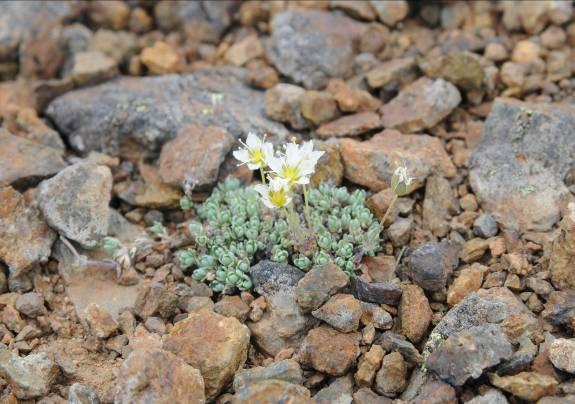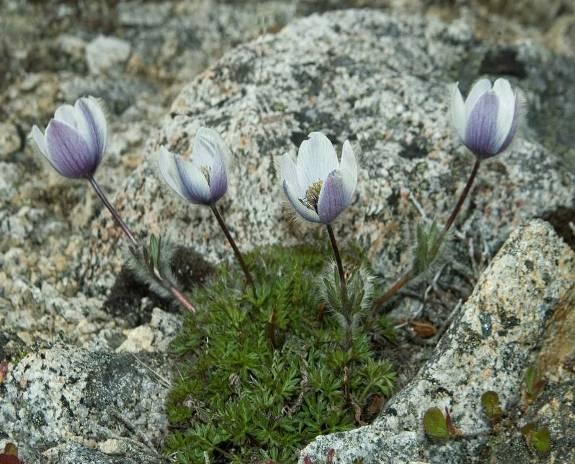Olga A. Mochalova
Other projects
9 Jul 2012
The Research and Conservation of Rare Endemic Plants and its Habitats in the Magadan Region (Northern Far East Asia, Russia)
The main aim of the work is a complex investigation and preservation of the rarest threatened plants, which are restricted to some areas of the Magadan region, and studying and protection of their habitats.

Minuartia tricostata Khokhr.
Out of over 1600 species of vascular plants growing in the Magadan region, only Magadania olaensis is included into the Red Data List of Russian Federation. Beside this one there are endemic species (Minuartia tricostata, Pulsatilla magadanensis, Draba magadanensis, Leontopodium stellatum) growing in very few sites of very restricted area ranging from 1-2 to 10–20 sq.km. They are not found in the world beyond the boundaries of these habitats. Due to the lack of data on the biology and habitat of these species it is impossible to prepare justification for including them into the official list of threatened species. Currently there is no information details of their regeneration ability and possibility of conservation in botanic gardens. Three of these species are growing in the Magadan surroundings in picnic areas as ornamental plants.

Pulsatilla magadanensis Khokhr. et Worosch.
Study of these species and their habitats are necessary to preserve biodiversity in Far East Asia. There is no data on limiting factors and threats to the species. At the moment habitats these species are not protected. It is impossible to produce recommendations on protection of localities without complex study of the habitats and interactions of the rare species with the plant communities.
The major activities include botanical study of 5 endemic threatened species and its habitats. We know 21 local sites, each covering 1-3 sq. km. We are going to study the biology of this species, create GIS maps, describe flora, vegetation, environmental conductions at these areas, allocate model plots for future monitoring. We are going to estimate the populations’ conditions, detect the limiting factors and threatening existing in each location. We will prepare the nominations for some of this species for official Red Data List and working out recommendations for the local authorities for the optimal strategies of conservation these species.
The innovations of our project are study the biological diversity of area of endemic plants at two levels – the species and ecosystem levels. We will identify an important endemic plant area, start long-time monitoring of the endemics. The typical documentations of this important plant area will be prepared to organize the protected areas of various levels.
We plan to develop liaise between academic institute (IBPN, NECSI, Russian Academy of Sciences), and Ecology Center for Teenagers (Local NGO), Magadan TV company on problems associated with the research and protection or rare, threatened plants in the Magadan area and promote the research on the subject via internet.